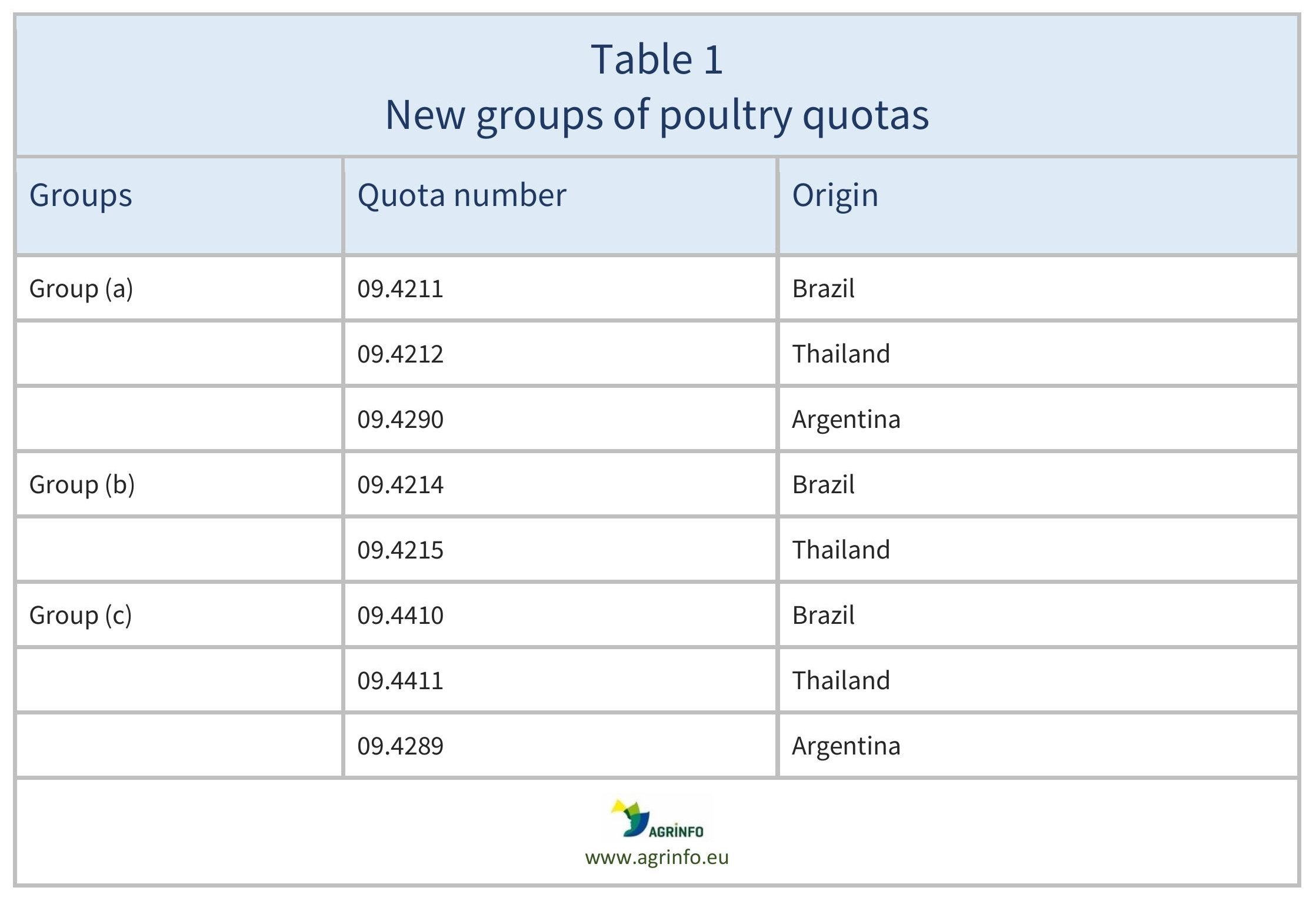Poultry tariff quotas
- Tariffs & quotas
Summary
The European Commission has revised the rules determining the quantities of poultry that may be imported by individual operators under tariff quotas. The amended rules counteract what was considered an unfair advantage previously enjoyed by importers of Ukrainian poultry: increased imports from the Ukraine (due to temporary liberalisation) allowed them to also secure greater access to quotas for poultry from Argentina, Brazil, and Thailand.
EU revises management of poultry tariff quotas to limit the impact of increased Ukrainian imports
Commission Delegated Regulation (EU) 2024/2637 of 30 July 2024 amending Delegated Regulation (EU) 2020/760 as regards the rules on the reference quantity for groups of tariff quotas in the poultry sector
Update
The European Commission has revised the rules determining the quantities of poultry that may be imported by individual operators under tariff quotas. The amended rules counteract what was considered an unfair advantage previously enjoyed by importers of Ukrainian poultry: increased imports from the Ukraine (due to temporary liberalisation) allowed them to also secure greater access to quotas for poultry from Argentina, Brazil, and Thailand.
Impacted Products
Poultry
What is changing?
There is considerable demand among importers for tariff quotas in certain agricultural products. To manage this demand, in general, an importer may not apply for a quantity of a quota that:
- is more than the imports from the previous 2 years (in quota and out of quota) from an origin within the scope of the quota, and
- is more than 15% of the quantity available in the quota.
In the case of poultry, different quotas are grouped together, meaning that the reference quantity is calculated on the basis of cumulative imports for each group.
The new Regulation removes the “All third countries” quotas that were previously included in the three quota groups set for poultry (for the revised groups see Table 1). This means that imports from all “third” (non-EU) countries will no longer be taken into account for calculating reference quantities applicable to the Brazilian, Thai, and Argentinian quotas.
Why?
The European Union has temporarily liberalised trade with the Ukraine (Regulation 2023/1077), leading to a significant increase of imports of poultry from Ukraine into the EU. Under previous rules, these imports could be used to assert a claim to a share of tariff quotas. This was considered to give an unfair advantage to importers of poultry from Ukraine. Removing the “All third countries” trade quotas from the quota groups aims to limit the impact of liberalised Ukrainian imports on access to other quotas.
Timeline
The new rules apply to the poultry quotas for any tariff quota period opened after 11 October 2024.
Background
Grouping quotas of different origins allows the importer to choose how to distribute the cumulative reference quantity across the individual quotas/origins. This gives importers flexibility where there may be disruption in trade from one origin, for instance related to an outbreak of avian flu.
For further information on EU tariff quotas, see Import tariffs and tariff rate quotas explained.
Resources
Commission Implementing Regulation (EU) 2020/761 as regards the management system of tariff quotas with licences
Commission Delegated Regulation (EU) 2020/760 as regards the rules for the administration of import and export tariff quotas subject to licences
Sources
Commission Delegated Regulation (EU) 2024/2637 amending Delegated Regulation (EU) 2020/760 as regards the rules on the reference quantity for groups of tariff quotas in the poultry sector
Disclaimer: Under no circumstances shall COLEAD be liable for any loss, damage, liability or expense incurred or suffered that is claimed to have resulted from the use of information available on this website or any link to external sites. The use of the website is at the user’s sole risk and responsibility. This information platform was created and maintained with the financial support of the European Union. Its contents do not, however, reflect the views of the European Union.
EU revises management of poultry tariff quotas to limit the impact of increased Ukrainian imports
Commission Delegated Regulation (EU) 2024/2637 amending Delegated Regulation (EU) 2020/760 as regards the rules on the reference quantity for groups of tariff quotas in the poultry sector
What is changing and why?
What is changing and why?
The EU has revised its rules on the quantities of poultry that may be imported by individual operators under tariff quotas (see Table 1). The aim is to counteract the perceived unfair advantage previously enjoyed by importers of Ukrainian poultry, whose increased imports (due to temporary liberalisation) allowed them a greater share of quotas for poultry from Argentina, Brazil, and Thailand. Imports from “third countries” (non-EU countries) such as Ukraine are no longer taken into account when calculating the importers’ permitted quota share.
Timeline
The new rules apply to the poultry quotas for any tariff quota period opened after 11 October 2024.
Disclaimer: Under no circumstances shall COLEAD be liable for any loss, damage, liability or expense incurred or suffered that is claimed to have resulted from the use of information available on this website or any link to external sites. The use of the website is at the user’s sole risk and responsibility. This information platform was created and maintained with the financial support of the European Union. Its contents do not, however, reflect the views of the European Union.

